|
Walter |
|
||||
![]()
|
World War I Draft Card |
|
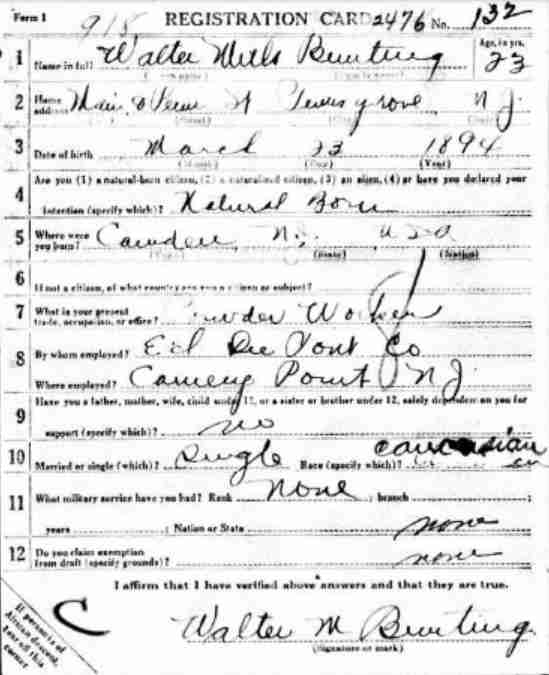
|
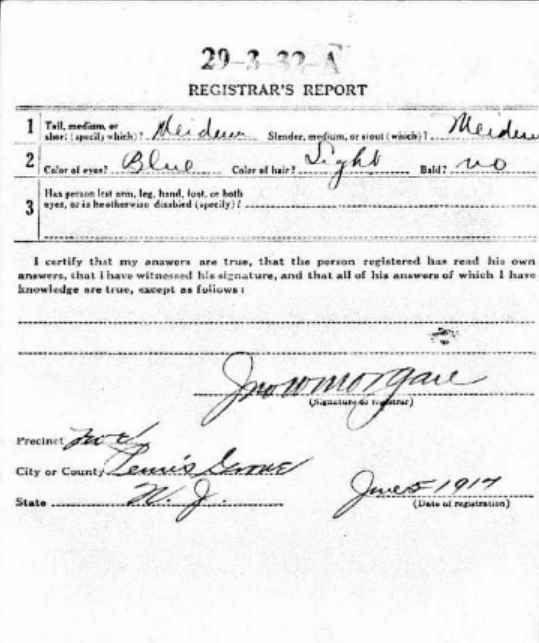
|
|
Walter M. Bunting - 1917-1918 |
|
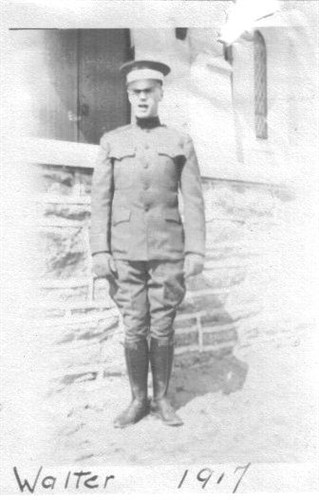
|
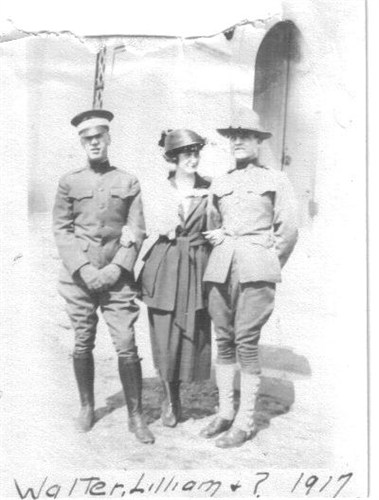
|
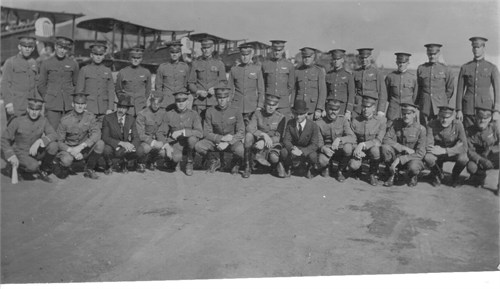
|
|
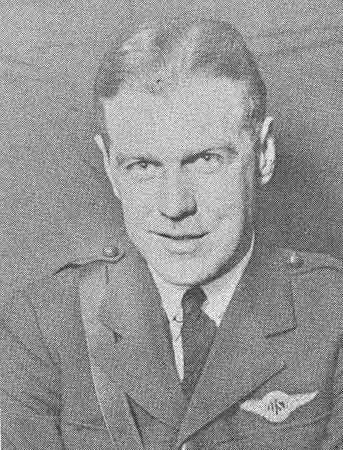
|
Walter
M. Bunting
|
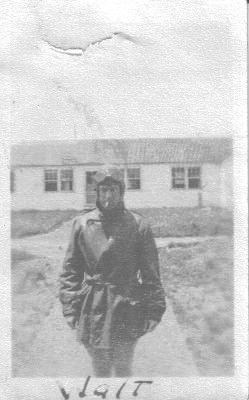
|
Walter
M. Bunting
|
| DeHaviland DH-4 |
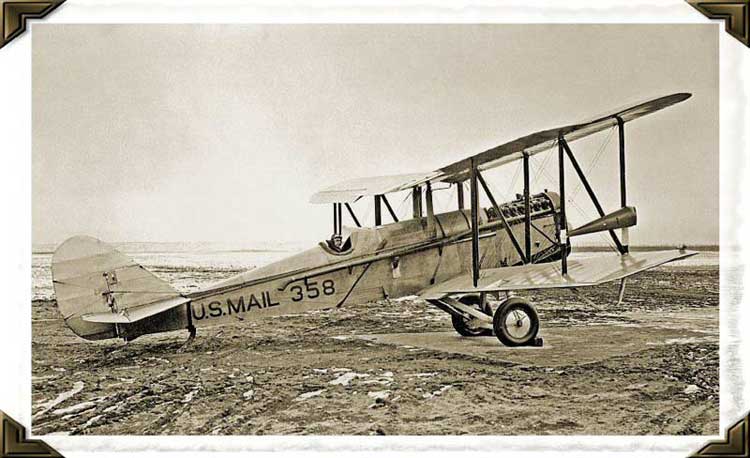
|
|
Telegram
regarding Plane Crash |
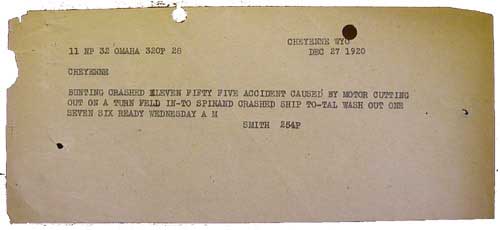
|
|
Wyoming
State Tribune - Cheyenne, Wyoming |
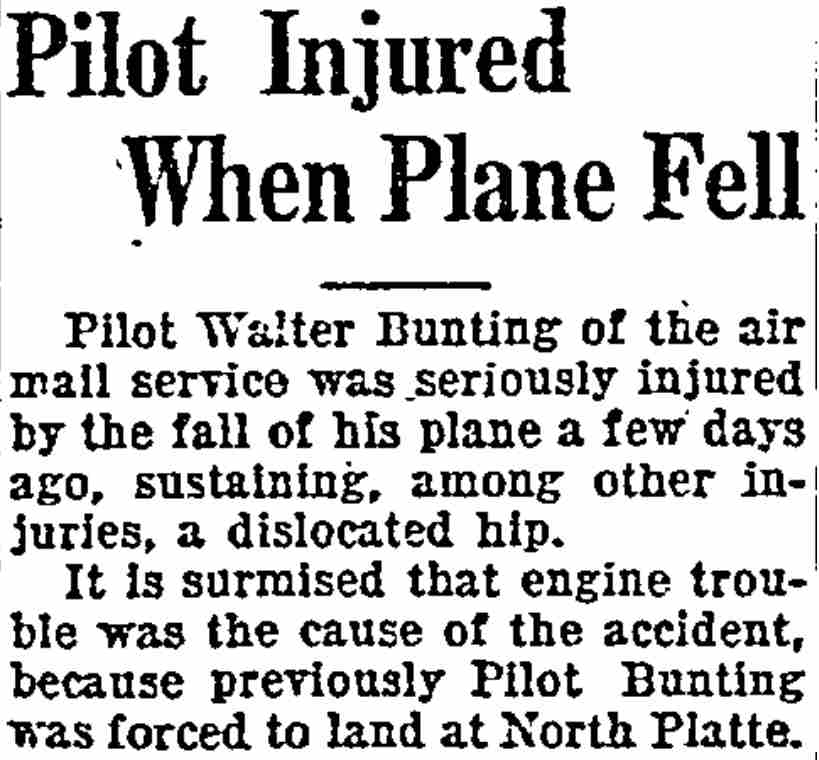
|
|
Omaha World Herald - April 4, 1921 |
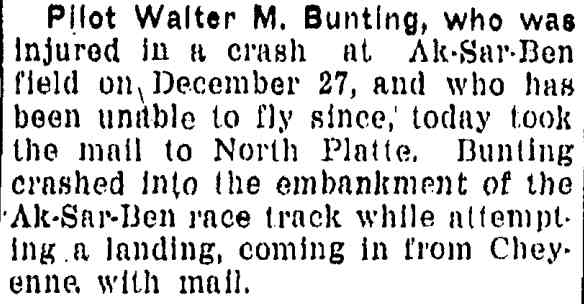
|
|
Wyoming State Tribune - Cheyenne, Wyoming - May 5, 1921 |
||

|
||
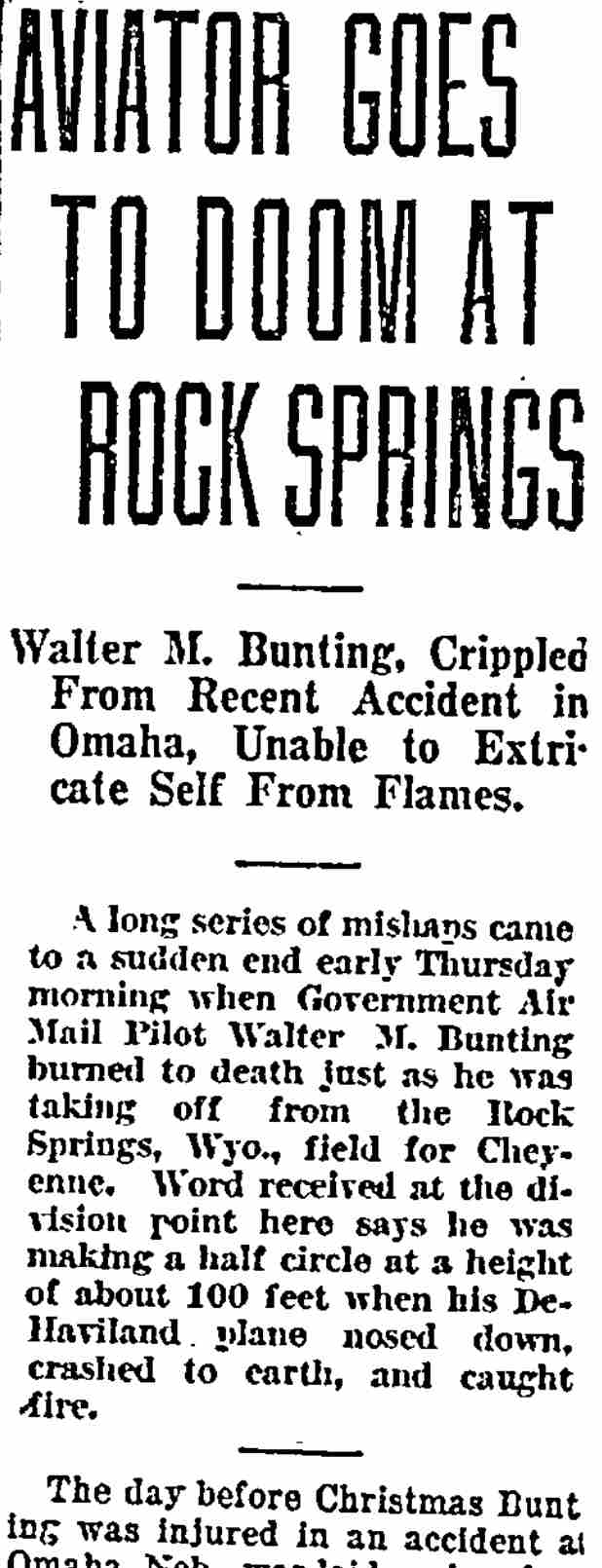
|
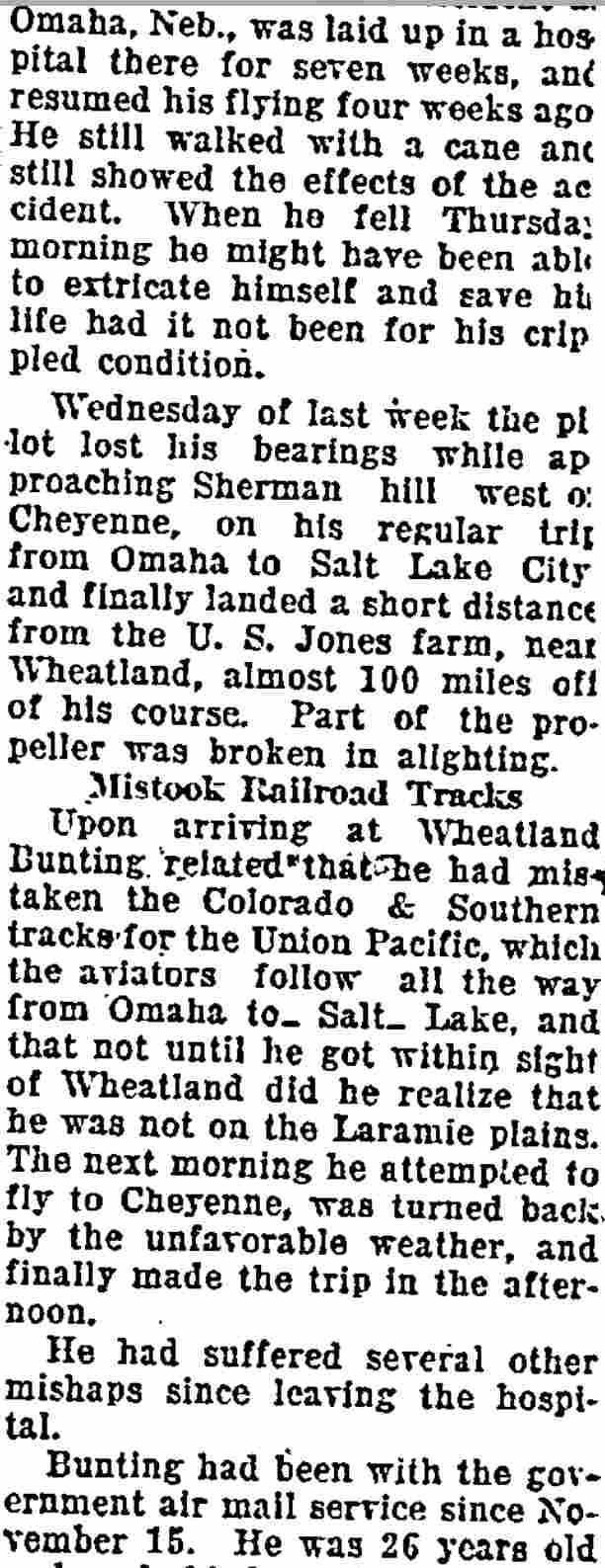
|
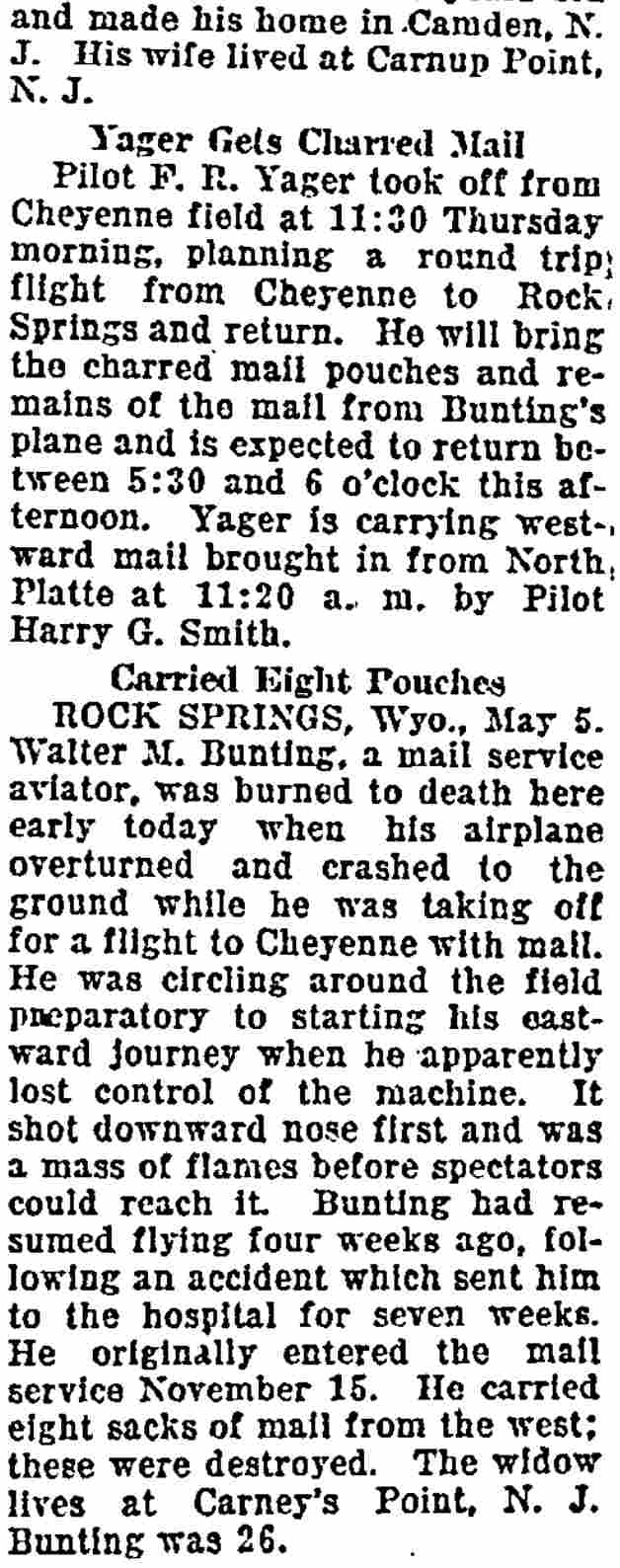
|
|
Denver Post - May 5, 1921 |
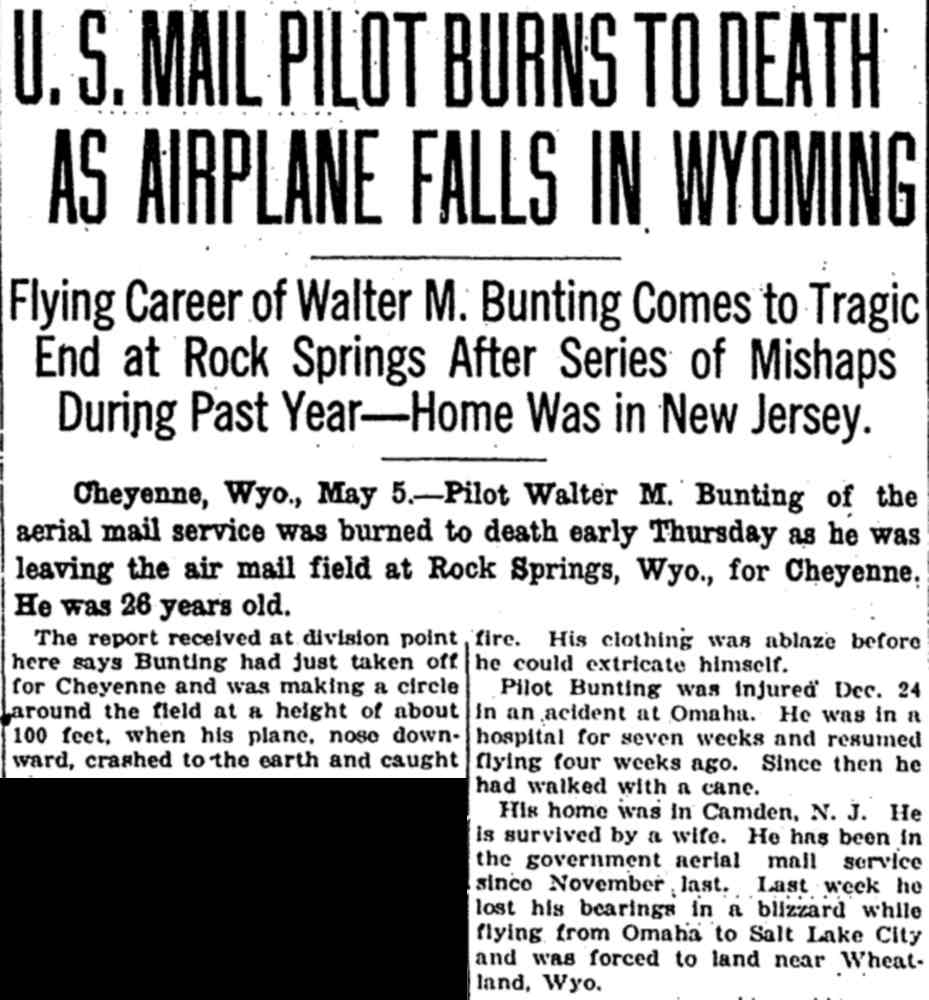
|
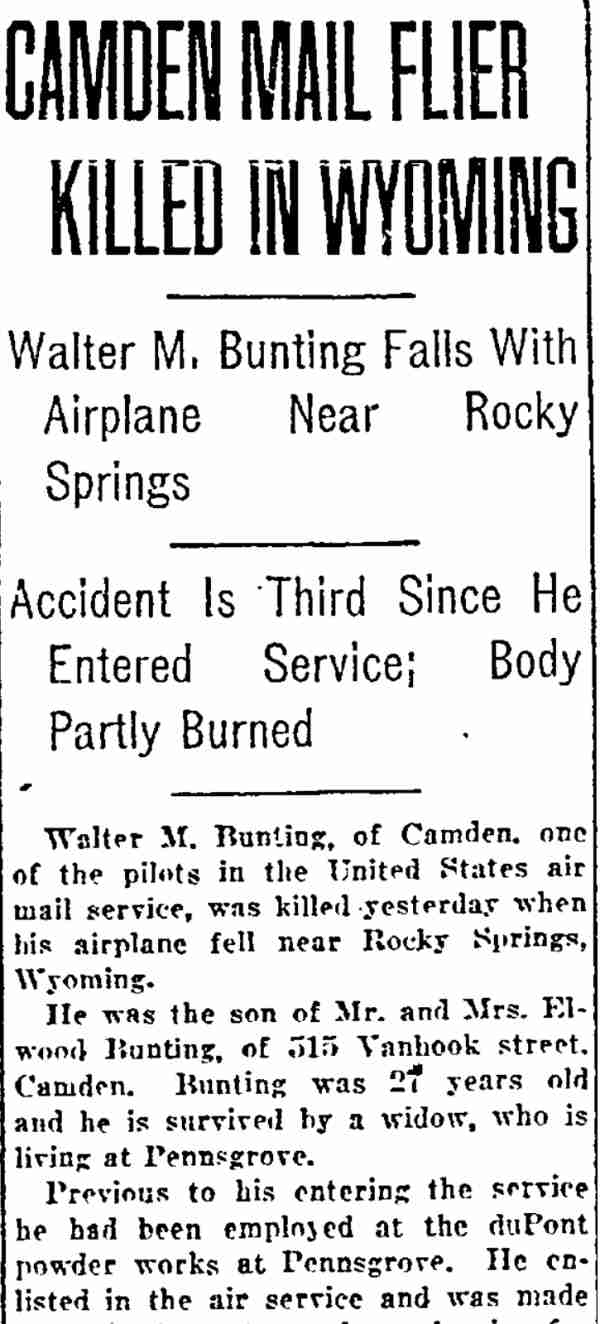
|
Philadelphia Inquirer Elwood Bunting
|
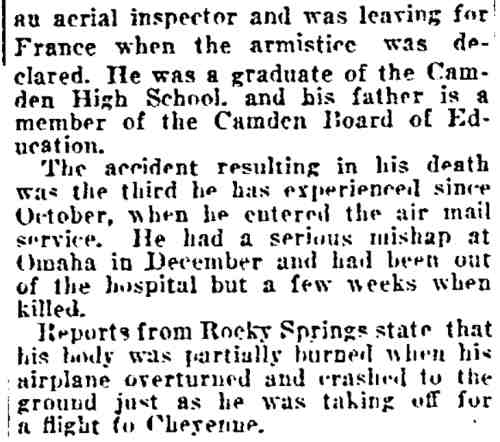
|
|
Omaha World Herald - May 7, 1921 |
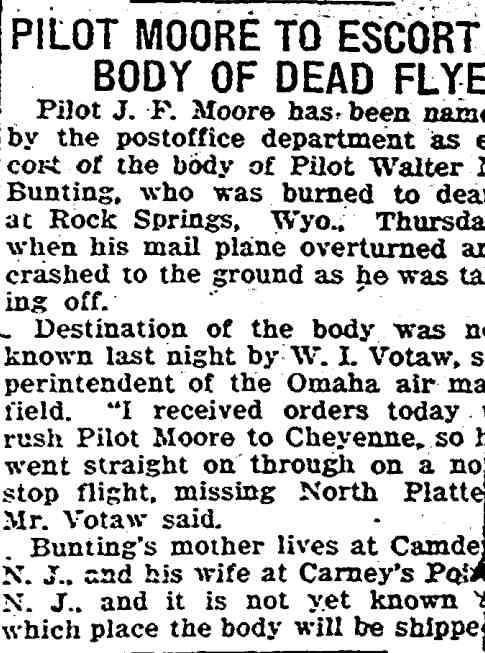
|
|
Omaha World Herald - May 8, 1921 |
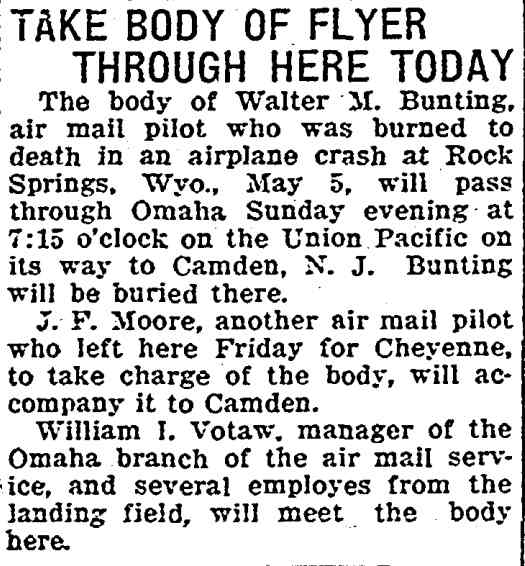
|
![]()
RETURN TO CAMDEN'S INTERESTING PEOPLE PAGE